Analysis
David Hockney’s Market Soars Ahead of Tate Retrospective
2016 has been a banner year for David Hockney, whose Tate retrospective opens in February.
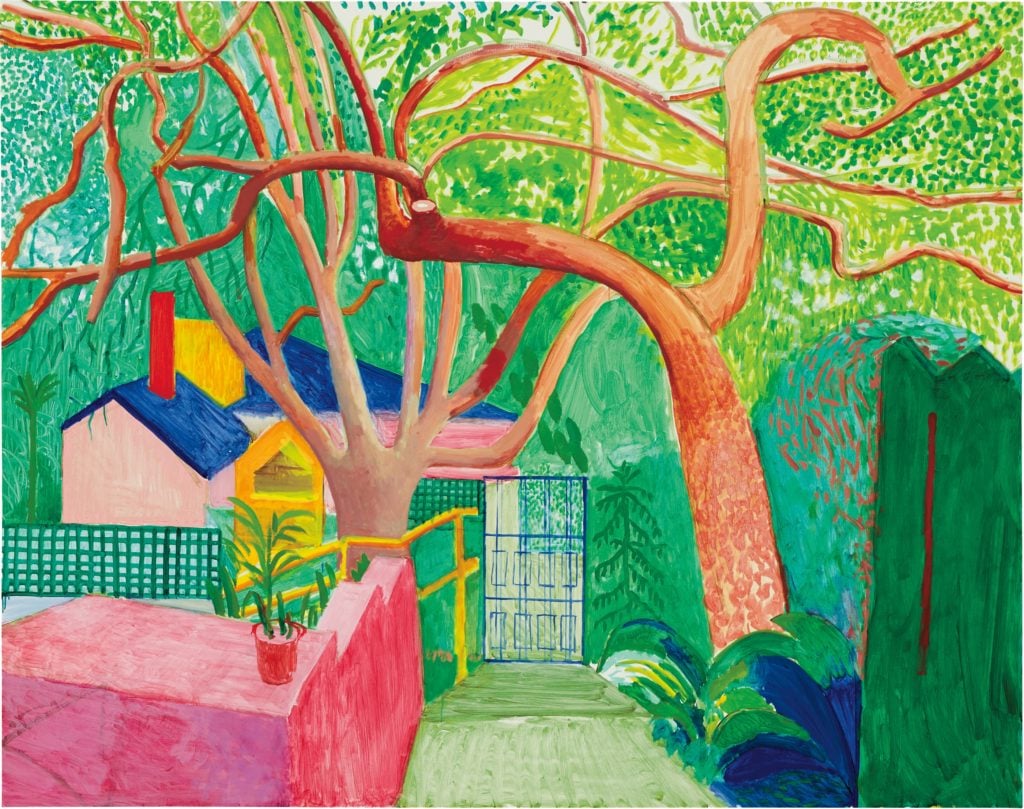
2016 has been a banner year for David Hockney, whose Tate retrospective opens in February.

Brian Boucher

Just before his 80th birthday, English artist David Hockney will be the subject of a retrospective opening at Tate Britain, and his market is climbing ahead of that major honor, with half of his top prices at auction coming since 2015.
Hockney’s auction record, which is $11.7 million, was set just this past November. But it might not remain so for long.
“You can be certain that that record will be broken in the next year,” said Jean-Paul Engelen, Phillips’s worldwide head of contemporary art, to artnet News in a phone call.
Phillips managed the November 2016 sale of a Hockney painting, The Gate (2000), for just under $7 million, his third-highest auction price.
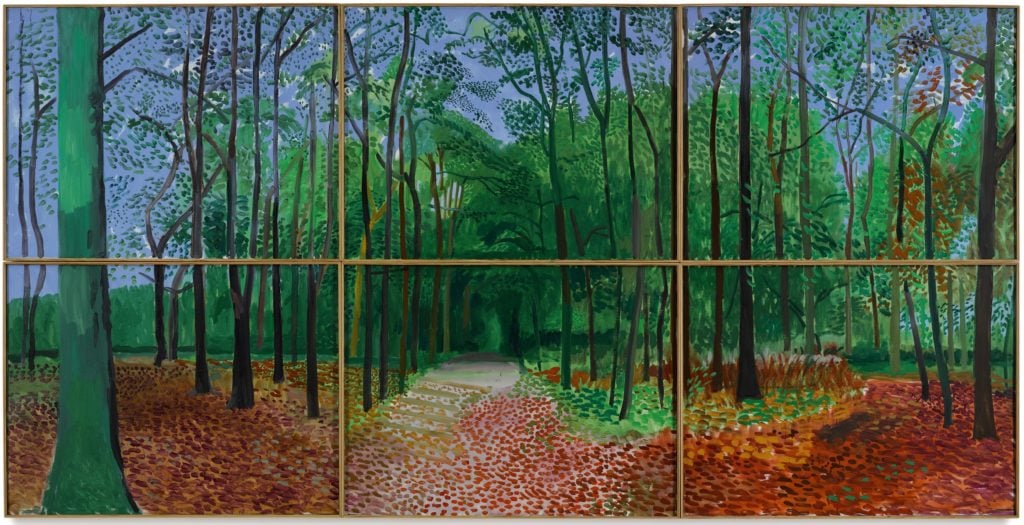
David Hockney, Woldgate Woods, 24, 25 and 26 October, 2006 (2006). Courtesy Sotheby’s.
Hockney collectors are hardly speculators, Engelen says, meaning that major works don’t come to market with great frequency. And when they do, it draws collectors’ attention.
Slightly less bold but also confident is Douglas Baxter, president of Pace Gallery, which represents the artist. “There’s room for his auction market prices to grow,” he said in a phone interview. He added that when the gallery staged its first Hockney exhibition, in the fall of 2010, world markets were not in great shape. Nonetheless, Hockney’s market remained resilient. “We managed to sell every work we had available. So his works sell in good times and bad.”
Comprising some 160 works and set to travel to Paris’s Centre Pompidou and the Metropolitan Museum of Art in New York, the retrospective is a momentous event, and is the first retrospective devoted to the Brit’s work since a 1988 exhibition at the Los Angeles County Museum of Art.
2016 was a banner year for the artist at auction, perhaps partly due to the hype around that event but also, according to Hockney market experts, because the artist’s market is only beginning to catch up with his stature. The total sum spent on his paintings alone at auction soared to a new high, reaching about $35 million, according to the artnet Price Database. That’s more than twice the total of the previous best year, 2013, when his paintings brought a total of $15 million.
The following image shows the growing volume of sales of Hockney’s paintings over the past 20 years:
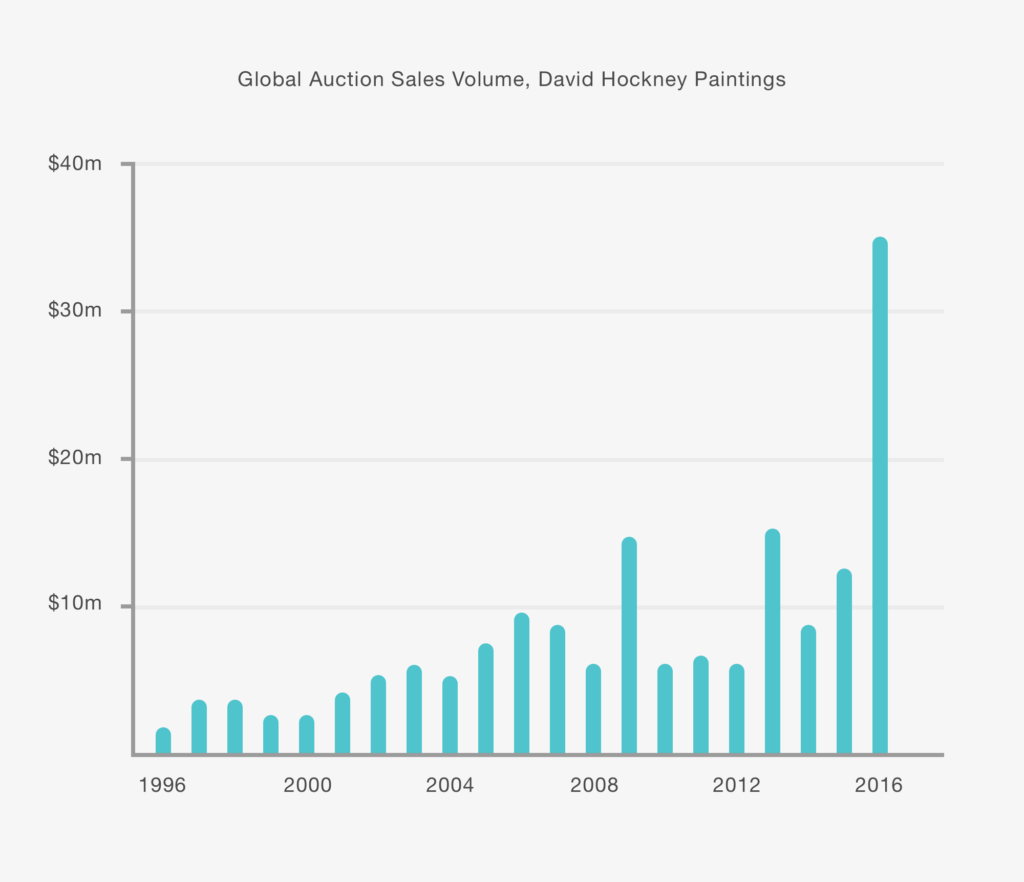
Sales of paintings by David Hockney by volume over the past 20 years. Courtesy Adam Evans-Pringle, for artnet.
Hockney’s auction record was set at Sotheby’s New York by the 12-foot-wide, six-panel landscape painting Woldgate Woods, 24, 25, and 26 October 2006. That figure makes him one of Britain’s most expensive living artists.
Some 39 Hockney works have exceeded the $1 million mark, and eight have sold for north of $5 million. Some nine of his top 10 sales have come in the last decade; half of them came since 2015. In further evidence that his market is on the rise, some 19 works have fetched more than $1 million in the last five years, up from 11 in the previous five-year period.
Michael Macaulay, head of evening sales, contemporary art, Sotheby’s New York, suggests another metric that illuminates Hockney’s growing market strength.
“Since the beginning of 2012, 23 Hockney works have been offered for over $500,000,” he said in a phone interview, “and only three have failed to sell. That success rate for top-level works is rare even for a major artist. Collectors love his work in a way that is rare even among the best contemporary artists, so there’s a fairly restricted supply of his work on the market, and huge demand when a major piece comes up.”
All the same, Hockney’s top auction prices are modest by comparison with some of his peers. Jasper Johns, Gerhard Richter, and Ed Ruscha are all within a few years of Hockney’s age, but have achieved far higher top prices. In Engelen’s view, the situation in Hockney’s market may be comparable to that for his countrymen Frank Auerbach or Lucian Freud a decade ago, when both of their markets were beginning to climb to their current levels.
Katharine Arnold, director and specialist in Christie’s post-war and contemporary art department, London, deems Hockney to be the greatest living British artist. “In the canon of 20th-century figurative painting, he certainly deserves his place alongside Francis Bacon and Lucian Freud,” she said in an email. “The upward trajectory in Hockney’s market is recognition not only of this but of collectors’s commitment to the artist. This means that very few of the great paintings are openly available for sale. A shortage of pictures and recognition of Hockney’s place in history fuels ever growing demand.”
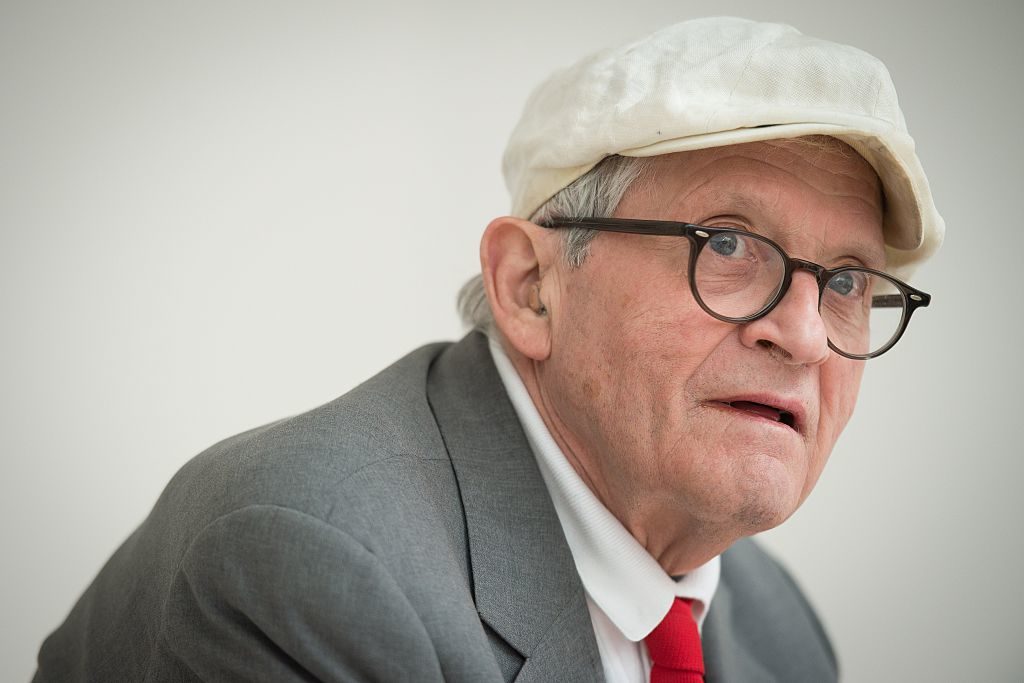
David Hockney at a press preview of his exhibition “Painting and Photography” at Annely Juda Gallery, London, in 2015. Photo Leon Neal/AFP/Getty Images.
Hockney, an Englishman who spent years of his life in California, is known for sunny scenes set at Los Angeles swimming pools as well as for his recent, brightly-hued landscape paintings of the English countryside.
He’s also a devotee of new technology and has made numerous recent works by drawing with an iPad, and has argued that drawing aids are a well-kept secret in art history; he co-organized a symposium in December 2001 at New York University on the subject of whether artists like Vermeer may have used optical devices to assist in their image-making. And that’s hardly just for the sake of being provocative, says Macaulay, who notes that “the nature of perception, of optics, of the nature of looking—that’s all been at the heart of what he’s done as an artist.”
Prints and multiples have come to the market less in recent years, with 2012 marking a high for sales volume in that category; but those works can fetch good prices when they do come to market. The following chart shows his sales volume in that category in recent years:
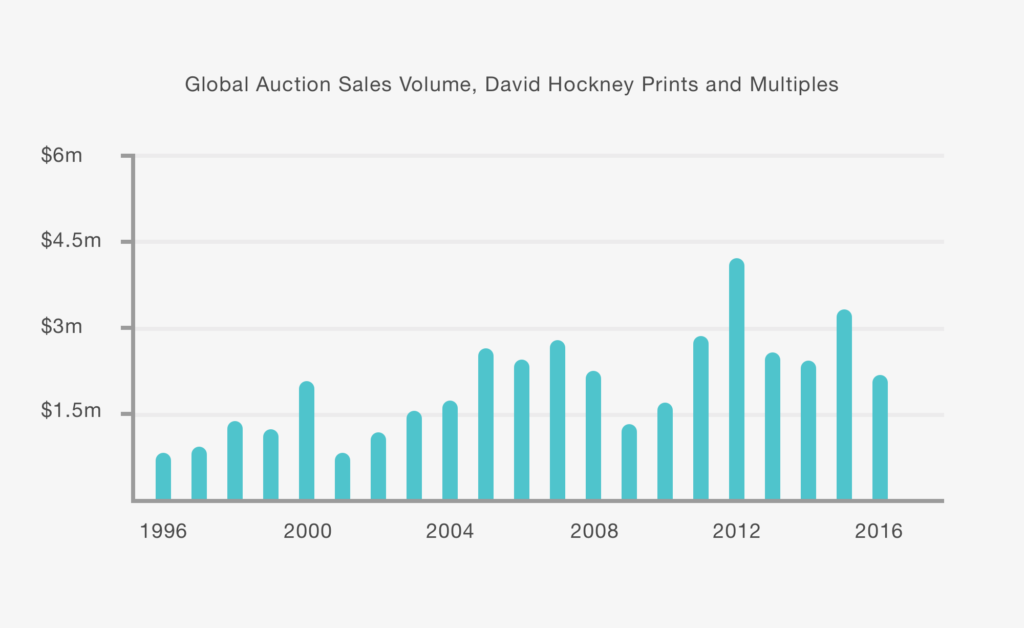
Sales of prints and multiples by David Hockney by volume over the past 20 years. Courtesy Adam Evans-Pringle, for artnet.
“There’s always been great demand for Hockney’s most sought-after subjects, especially those inspired by his time spent in Los Angeles from the 1960s and ’70s,” according to Conner Williams, senior specialist in contemporary prints and multiples at artnet auctions. “These include his series of prints: A Hollywood Collection (1965), The Weather Series (1973), Afternoon Swimming (1971/80) and Lithograph of Water Made of Lines (1978-80). His Moving Focus series of the 1980s and his more recent use of the iPad in the last decade have seen great reception among collectors at auction and on the private market.”
Works on paper can be a relatively affordable area for Hockney collectors. Phillips London offered no fewer than 11 Hockney works in its Evening & Day Editions sale on January 19, with two unique works on hand-colored pressed paper, featuring trademark swimming pool scenes, commanding a low estimate of £400,000 (about $492,000). They turned out to be the top two lots in the sale: Steps with Shadow F (Paper Pool 2) (1978) fetched £629,000 ($773,670) and Gregory in the Pool E (Paper Pool 4) (1978) sold for £485,000 ($596,550).
artnet auctions, too, as part of its Contemporary Editions sale (live through January 26), is offering seven works from the 1970s to the present, with estimates ranging from just $4,000 to $100,000 and in formats including etching, lithography, an inkjet print based on an iPad drawing, and even a homemade print executed on an office copy machine.